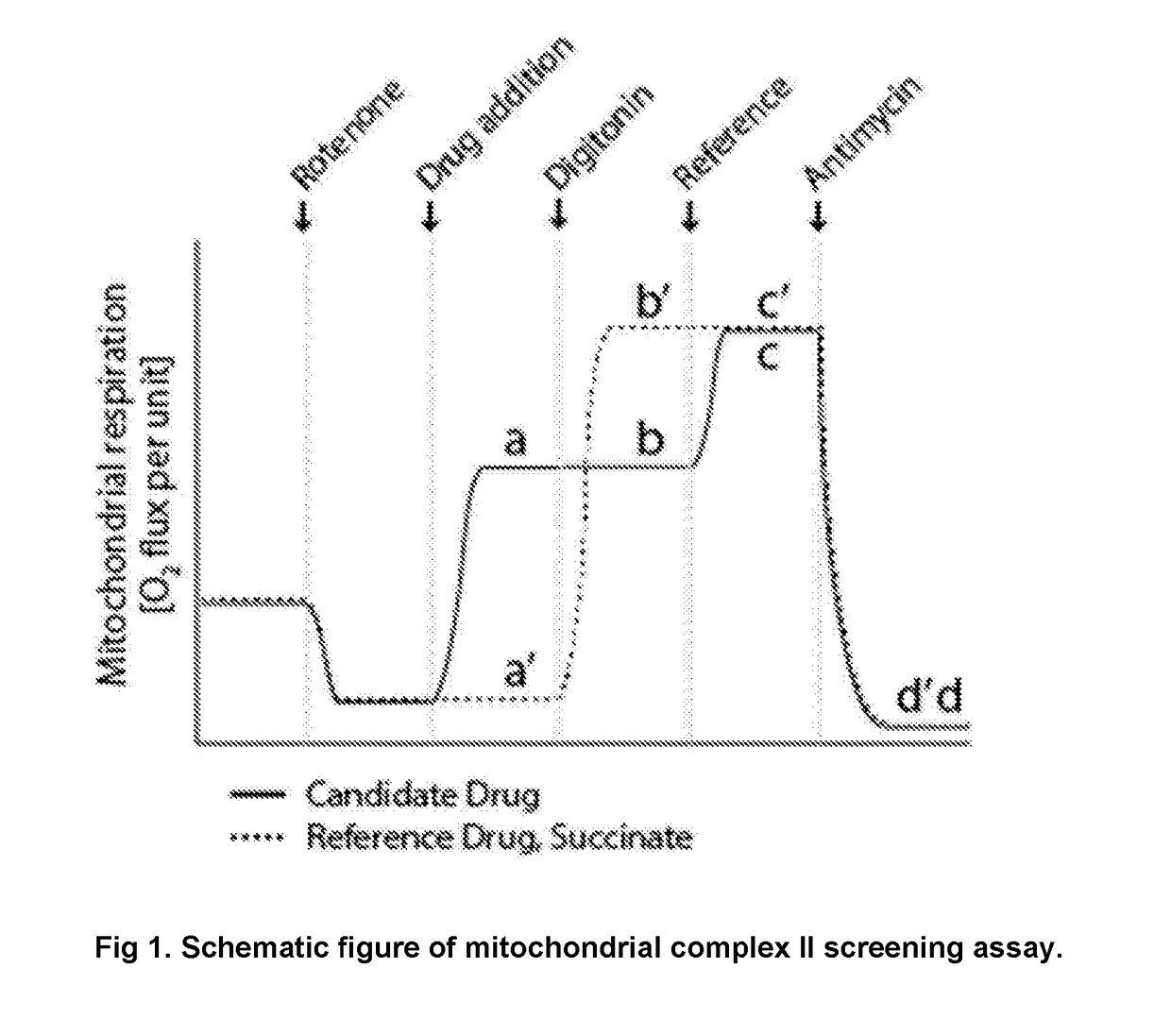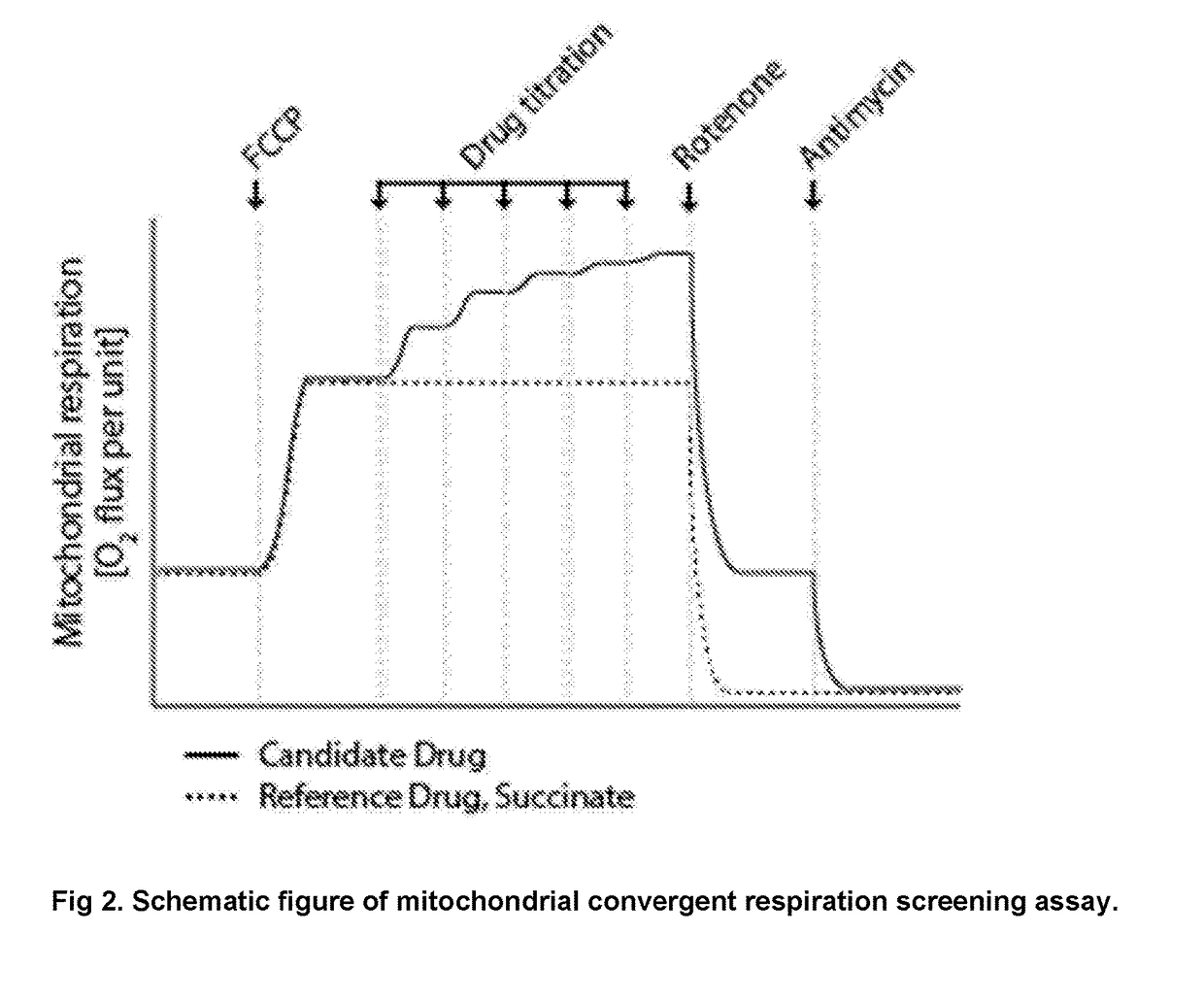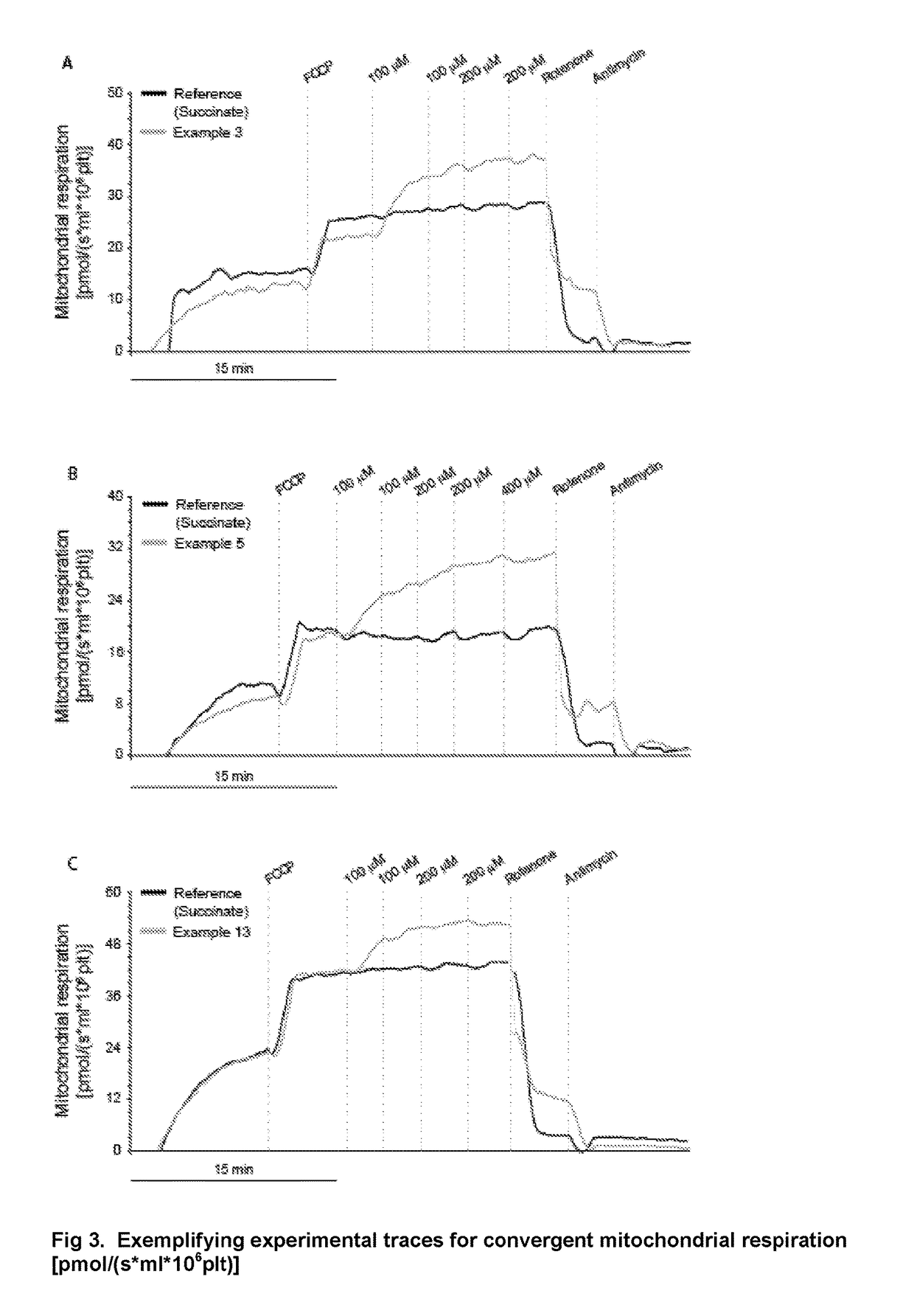Protected succinates for enhancing mitochondrial ATP-production
a technology of atp-production and protected succinates, which is applied in the direction of biocide, muscular disorders, drug compositions, etc., can solve the problem that there is no available treatment that can cure mitochondrial diseases, and achieve the effect of avoiding or counteracting reperfusion injuries
- Summary
- Abstract
- Description
- Claims
- Application Information
AI Technical Summary
Benefits of technology
Problems solved by technology
Method used
Image
Examples
example 1
Succinic Acid bis-(2,2-dimethyl-propionyloxymethyl)ester
[0333]
[0334]Succinic acid (1.2 g, 10 mmol) and chloromethyl pivalate (5.8 mL, 40 mmol) were added to acetone (4 mL) and the mixture cooled in ice. Triethylamine (3.3 mL, 24 mmol) was added portion-wise and the solution stirred overnight at room temperature. The mixture was concentrated and partitioned between water and ethyl acetate. The ethyl acetate solution was washed with water then sodium bicarbonate solution. It was treated with decolourising charcoal, dried over potassium carbonate and concentrated to an oil. Purification by MPLC chromatography (basic alumina, 10% ethyl acetate / 90% cyclohexane) afforded 0.18 g succinic acid bis-(2,2-dimethyl-propionyloxymethyl) ester as an oil. 1H NMR (CDCl3, ppm) δ 1.23 (s, 18H), 2.71 (s, 4H), 5.77 (s, 4H).
example 2
Succinic Acid 2,2-dimethyl-propionyloxymethyl Ester Methyl Ester
[0335]
[0336]Methyl succinate (1.3 g, 10 mmol) and chloromethyl pivalate (2.9 mL, 20 mmol) were added to acetone (2 mL) and the mixture cooled in ice. Triethylamine (2.0 mL, 14 mmol) was added portion-wise and the solution stirred overnight at room temperature. The mixture was concentrated and partitioned between water and ethyl acetate. The ethyl acetate solution was washed with water then sodium bicarbonate solution, dried over potassium carbonate and concentrated to give 2.4 g succinic acid 2,2-dimethyl-propionyloxymethyl ester methyl ester as an oil. 1H NMR (CDCl3, ppm) δ 1.23 (s, 9H), 2.68 (m, 4H), 3.71 (s, 3H), 5.78 (s, 2H).
example 3
Succinic Acid Diacetoxymethyl Ester
[0337]
[0338]Succinic acid (58.6 g, 0.496 mol) was added to dichloromethane (2 L) and the mixture cooled to 0° C. Diisopropylethylamine (201 mL, 1.154 mol) was added during 20 minutes followed by bromomethyl acetate (159.4 g, 1.042 mol) during 30 minutes and the solution stirred overnight under an atmosphere of nitrogen. The solution was cooled to 0° C. and washed successively with 1 L of cold 1% hydrochloric acid, 0.6% hydrochloric acid and water (×3). The solution was treated with decolourizing charcoal, dried with magnesium sulphate and concentrated to an oil which was crystallized from diethyl ether (200 mL) / isohexane (10 mL) to afford 92 g of succinic acid diacetoxymethyl ester as a white solid. 1H NMR (CDCl3, ppm) δ 2.13 (s, 6H), 2.72 (s, 4H), 5.76 (s, 4H). A further 8 g of pure material was obtained from concentration of the liquors.
PUM
| Property | Measurement | Unit |
|---|---|---|
| temperature | aaaaa | aaaaa |
| temperature | aaaaa | aaaaa |
| temperature | aaaaa | aaaaa |
Abstract
Description
Claims
Application Information
 Login to View More
Login to View More - R&D
- Intellectual Property
- Life Sciences
- Materials
- Tech Scout
- Unparalleled Data Quality
- Higher Quality Content
- 60% Fewer Hallucinations
Browse by: Latest US Patents, China's latest patents, Technical Efficacy Thesaurus, Application Domain, Technology Topic, Popular Technical Reports.
© 2025 PatSnap. All rights reserved.Legal|Privacy policy|Modern Slavery Act Transparency Statement|Sitemap|About US| Contact US: help@patsnap.com



